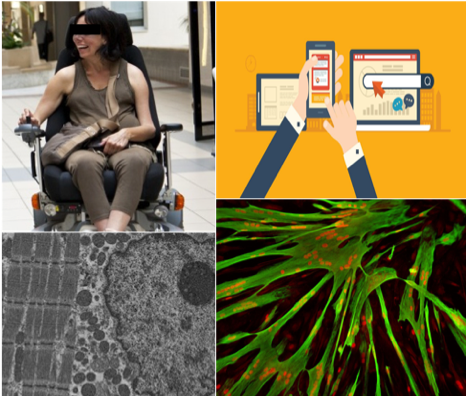Research program : Hereditary neuromuscular diseases
Home > Team 5 > Research program > Axe 3
Pathophysiology and therapeutic approach to FSHD
D. Laoudj-Chenivesse, S. Arbogast, JF Brun, E. Raynaud de Mauverger, J. Mercier
The originality of our project is to conduct in the same place, research on FSHD, a rare autosomal dominant muscular disease, based on the identification of candidate genes and their pathophysiological consequences, biomarkers and the development of new therapies.
Pathophysiological mechanisms
Numerous studies are in favour of a predominant role for oxidative stress. Since 2005, our own data confirm the involvement of oxidative stress (Barro et al. 2010; Turki et al. 2012; Wilson et al. 2018) and the relevance of a targeted therapeutic strategy based on the use of antioxidants (Passerieux et al. 2015). The objective of our studies is to validate cellular models that would allow innovative advances in the understanding of the mechanisms involved in oxidative stress, inflammation and mitochondrial dysfunction, key players in many pathologies. More detailed analyses of the action of reactive oxygen species (ROS) and their sources could contribute to a better understanding of the pathophysiological basis of FSHD.
Identification of biomarkers
The identification of new biomarker(s) related to FSHD will facilitate the implementation of smaller and shorter clinical trials; better patient selection and stratification and finally a better evaluation of treatment options for patients. Such biomarkers could be an added value to the development of unique software in the field of personalized medicine to help medical decision-making adapted to patients with FSHD.
Personalized medicine
The clinical studies we have conducted have led us to set up a specialized and personalized consultation in order to analyze the long-term effects of antioxidant intake adjusted to each patient’s specific analyses, on muscle function and to the development of automated medical decision support software implementing the rules for antioxidant supplementation dosage adapted to the patient’s profile.
All the fundamental, functional, clinical and biological data will be supported by new analysis methods in bioinformatics, biostatistics and mathematical modelling.

